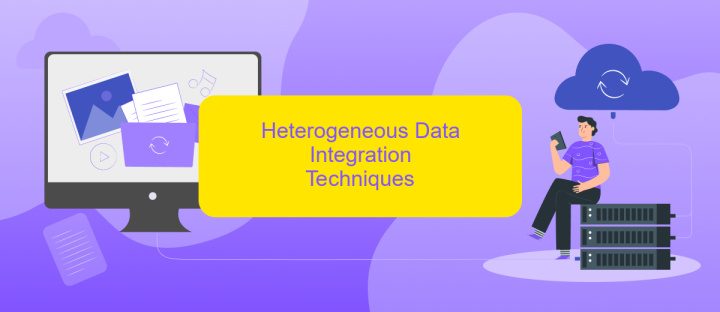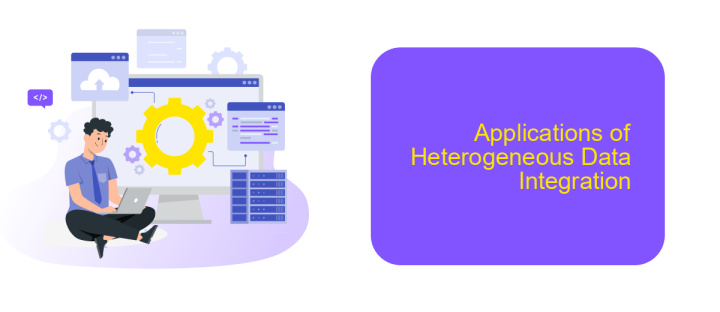Heterogeneous Data Integration
Heterogeneous data integration is a critical process in modern data management, enabling the seamless merging of diverse data sources into a unified, coherent system. This integration is essential for organizations to leverage comprehensive insights, improve decision-making, and enhance operational efficiency. By addressing the challenges of data variety, volume, and velocity, heterogeneous data integration paves the way for more robust and dynamic information ecosystems.
Introduction
Heterogeneous data integration is a critical aspect of modern data management, enabling organizations to combine data from diverse sources into a cohesive and usable format. This process is essential for businesses aiming to leverage comprehensive insights from their data to make informed decisions. As data sources continue to proliferate, the challenge of integrating heterogeneous data becomes increasingly complex.
- Combining structured and unstructured data
- Ensuring data consistency and accuracy
- Managing diverse data formats and schemas
- Maintaining data security and compliance
To address these challenges, advanced tools and platforms like ApiX-Drive provide robust solutions for seamless data integration. ApiX-Drive facilitates the connection of various data sources, automating the data transfer and transformation processes. By leveraging such services, organizations can streamline their data workflows, ensuring that integrated data is both reliable and readily available for analysis. This not only enhances operational efficiency but also empowers data-driven decision-making across the enterprise.
Data Integration Challenges

Integrating heterogeneous data sources presents numerous challenges, primarily due to the diverse formats, structures, and semantics involved. Data from various systems such as databases, spreadsheets, and cloud services often lack standardization, making it difficult to achieve seamless integration. Additionally, ensuring data quality and consistency across these disparate sources requires robust validation and transformation processes, which can be both time-consuming and resource-intensive.
Another significant challenge is the need for real-time data integration, which demands efficient and scalable solutions. Tools like ApiX-Drive can simplify this process by providing automated workflows that connect different applications and services, enabling real-time data synchronization. However, security and privacy concerns also arise, as integrating data from multiple sources often involves sensitive information. Ensuring compliance with data protection regulations and implementing robust security measures are crucial to mitigating these risks. Overall, addressing these challenges requires a combination of advanced technologies, strategic planning, and continuous monitoring.
Heterogeneous Data Integration Techniques

Heterogeneous data integration is a complex process that involves combining data from different sources and formats into a unified view. This integration is essential for businesses that need to analyze diverse datasets to gain comprehensive insights.
- Data Warehousing: This technique involves consolidating data from various sources into a central repository. It helps in maintaining data consistency and supports complex queries.
- Data Federation: Unlike data warehousing, data federation allows real-time data access without moving data from its original source. This method provides a virtual database for querying.
- ETL (Extract, Transform, Load): ETL tools extract data from different sources, transform it into a compatible format, and load it into a target system. This process ensures data quality and consistency.
- API Integration: Services like ApiX-Drive facilitate API integration, allowing seamless data exchange between different systems in real-time. This technique is particularly useful for integrating cloud-based applications.
Choosing the right integration technique depends on the specific requirements and existing infrastructure of an organization. While data warehousing and ETL are traditional methods, real-time integration through APIs and data federation are gaining popularity for their flexibility and efficiency.
Applications of Heterogeneous Data Integration

Heterogeneous data integration is a critical aspect of modern data management, enabling organizations to combine data from various sources into a unified view. This process is essential for businesses that rely on diverse data streams to make informed decisions and drive innovation.
One of the primary applications of heterogeneous data integration is in the healthcare sector, where integrating patient records, clinical trials, and genomic data can lead to more personalized and effective treatments. Additionally, in the financial industry, integrating data from different financial systems can improve risk management and fraud detection.
- Enhanced decision-making through comprehensive data analysis
- Improved operational efficiency by automating data workflows
- Increased accuracy and consistency of data across platforms
- Facilitation of real-time data access for timely responses
Tools like ApiX-Drive play a significant role in simplifying the integration process. By providing a user-friendly interface and supporting a wide range of data sources, ApiX-Drive enables organizations to set up and manage their data integrations effortlessly. This allows businesses to focus on leveraging their data rather than dealing with the complexities of integration.


Future Directions and Challenges
The future of heterogeneous data integration holds significant potential for advancements in machine learning and artificial intelligence, which can automate and optimize data integration processes. As data sources continue to diversify, the challenge of maintaining data consistency and accuracy becomes increasingly complex. Innovative solutions like ApiX-Drive can play a crucial role by providing seamless integration of various data sources, thereby reducing the manual effort required and minimizing errors.
Another major challenge lies in ensuring data security and privacy, especially when integrating sensitive information from multiple sources. Future research should focus on developing robust encryption methods and secure data transfer protocols to address these concerns. Additionally, the scalability of data integration systems must be enhanced to handle the ever-growing volume of data efficiently. By leveraging cloud technologies and distributed computing, we can create more scalable and resilient data integration frameworks.
FAQ
What is Heterogeneous Data Integration?
Why is Heterogeneous Data Integration important?
What are the common challenges in Heterogeneous Data Integration?
How can automation help in Heterogeneous Data Integration?
What are the best practices for successful Heterogeneous Data Integration?
Time is the most valuable resource in today's business realities. By eliminating the routine from work processes, you will get more opportunities to implement the most daring plans and ideas. Choose – you can continue to waste time, money and nerves on inefficient solutions, or you can use ApiX-Drive, automating work processes and achieving results with minimal investment of money, effort and human resources.

